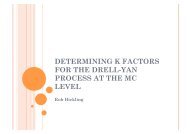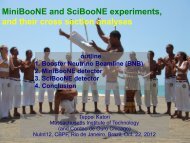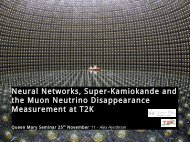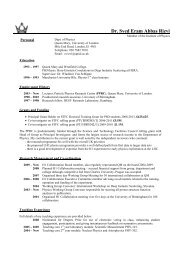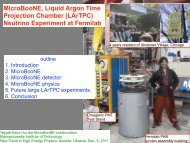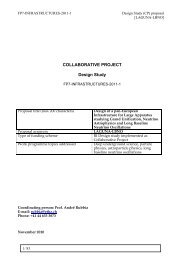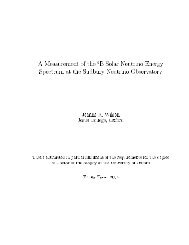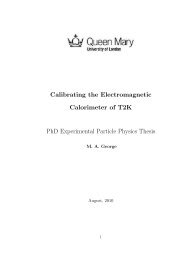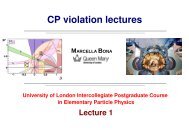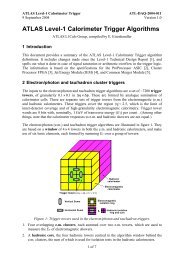Calibration and Setup Procedures
Calibration and Setup Procedures
Calibration and Setup Procedures
Create successful ePaper yourself
Turn your PDF publications into a flip-book with our unique Google optimized e-Paper software.
must be checked. Q: what do we do if its wrong? Do we anticipate delays in thereceiver stations?Procedure: use calorimeter calibration system. Pulse 0.8–0.9 <strong>and</strong> 0.9–1.0 towersseparately <strong>and</strong> compare their timings at the PPMs. Ideally we would then pulseboth towers simultaneously <strong>and</strong> checked the summed pulses. A single energywithin the trigger dynamic range should be sufficient.A.4 Latency of PPM InputsSignals from the calorimeters will arrive at the PPM inputs with varying latency.The latency (whole clock ticks) needs to be determined for every tower.Procedure: use calorimeter calibration system. PPMs can read up to 5 bunchcrossings of data (unless we can freeze their pipelines?). This is probably lessthan the variation in timing at least between Barrel <strong>and</strong> Endcap, EM <strong>and</strong> Hadronicsections. So we need to scan the 5 bunch crossing frame: read a few events,change the readout frame, iterate. Determine which frame contains the pulse foreach tower <strong>and</strong> the latency within that frame.A.5 Timing of FADC Strobe PhaseThe calorimeter signals arriving at the PPM inputs will have varying phase withrespect to the LHC clock. This phase (within one clock cycle) needs to be determinedfor every tower. The pulse covers about 5 clock cycles. The aim is set theFADC strobe of the central cycle at the peak of the pulse. Q: what is the requiredtiming margin?Procedure: use calorimeter calibration system. Assume the latency (wholeclock ticks) has already been determined (A.4). Read a few events, adjust theFADC strobe by 1ns, iterate. Determine which strobe timing gives the maximumpeak value <strong>and</strong> most central pulse shape. Or something like that?A.6 <strong>Calibration</strong> of Unsaturated BCID ParametersThe unsaturated BCID algorithm uses a “matched filter”, ie the filter parameterscorrespond roughly to the pulse shape. The pulse shape must be measured forevery tower. Reliable identication of the bunch crossing requires that the shape beindependent of energy. This must be checked.Procedure: use calorimeter calibration system. Assume the latency <strong>and</strong> FADCstrobes have already been determined (A.4,A.5). Read a few events, measure8





